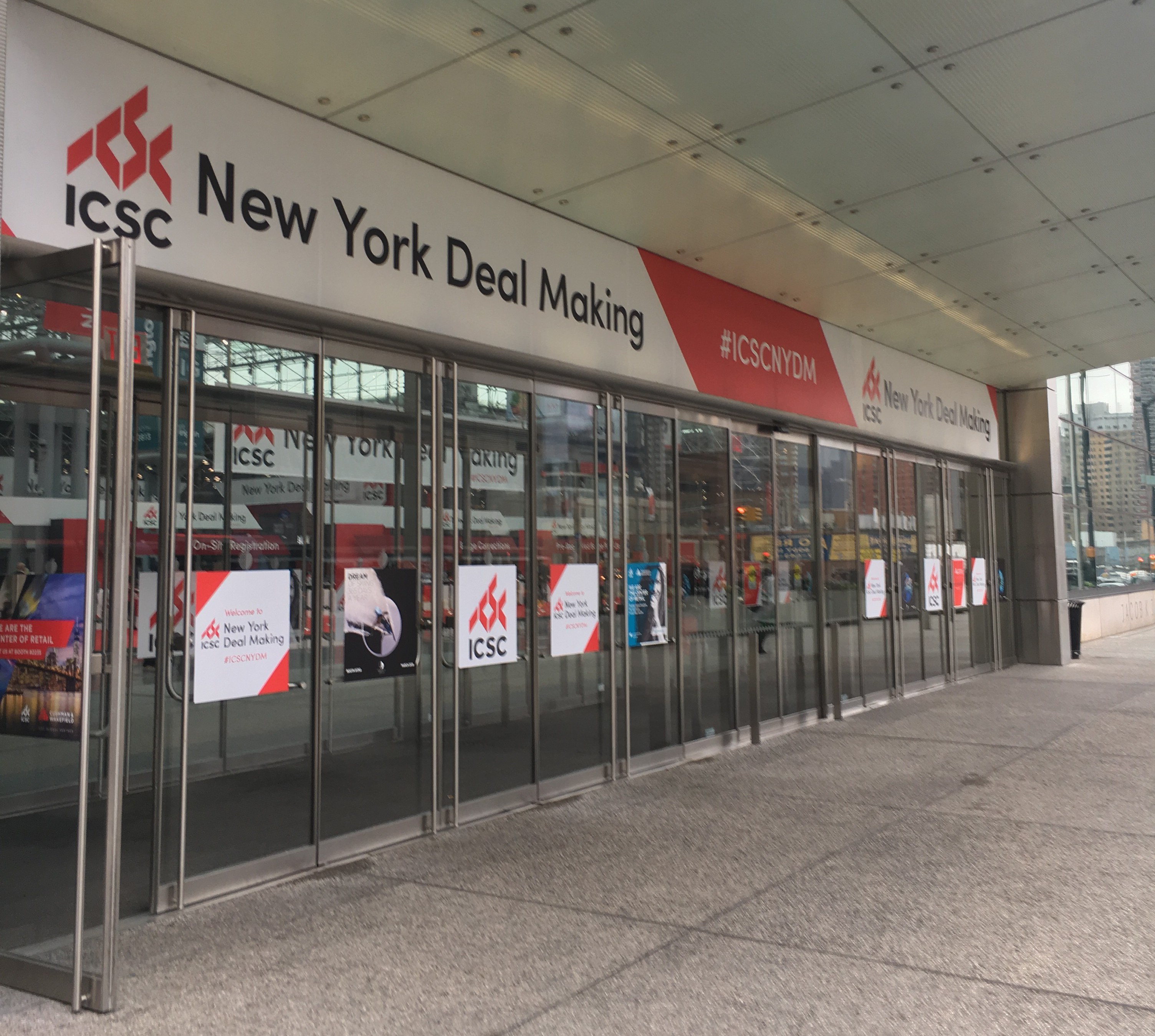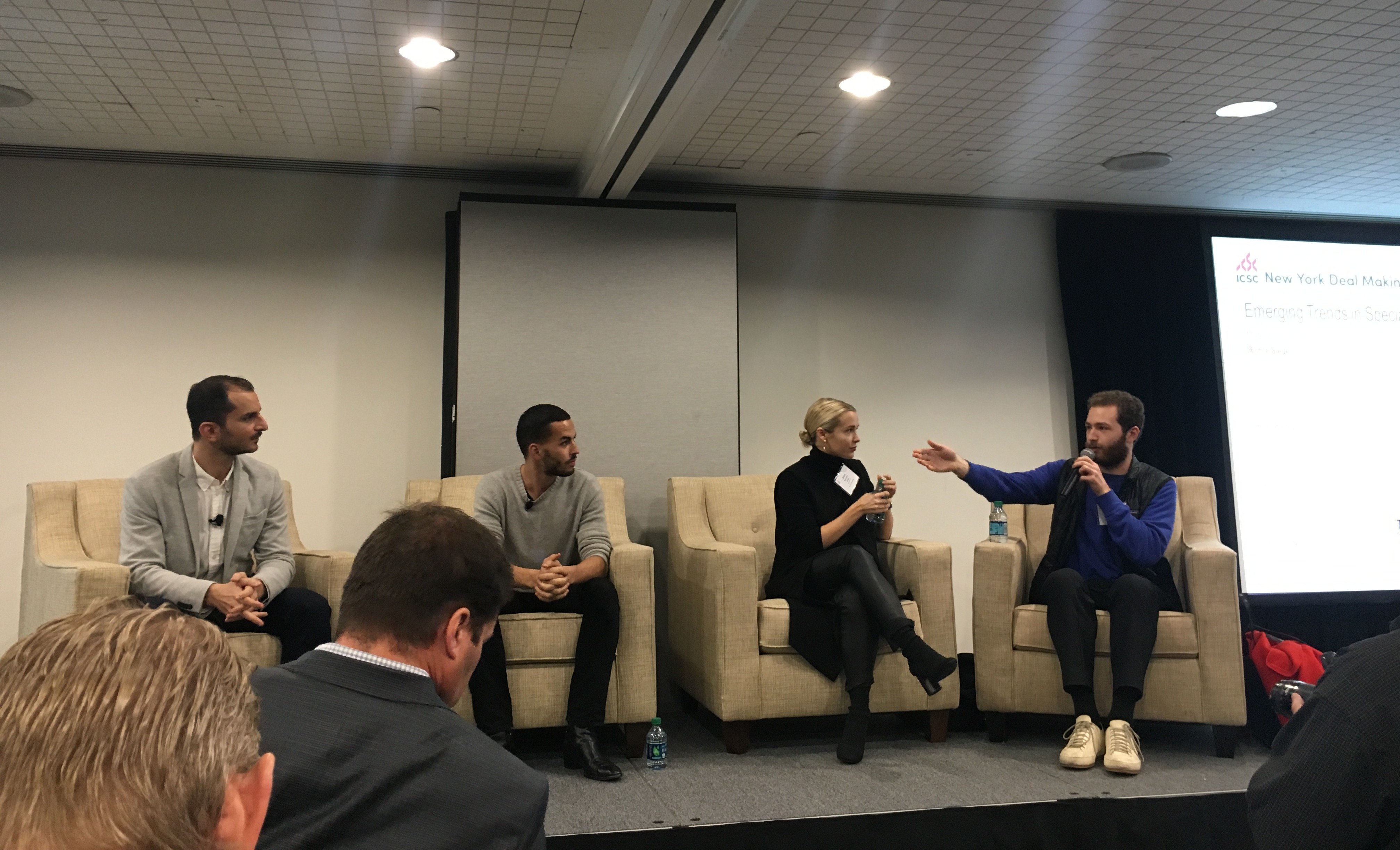How to Survive Retail’s Next Phase
At ICSC's New York Deal Making event, industry experts listed a number of critical strategies that retailers and retail real estate owners will need to pursue to stay competitive, among them the need for flexibility and the adaptability to address changing consumer preferences and shopping habits.
By Samantha Goldberg

International Council of Shopping Centers New York Deal Making event at the Javits Center in Midtown Manhattan
While many of this year’s headlines warned of retail’s demise, the overall sentiment about the sector’s future was much more optimistic at the 2017 International Council of Shopping Center’s (ICSC) annual New York Deal Making event last week. But industry experts and panelists across the board did recognize retail is going through major change. Many said retailers and retail real estate owners’ futures will depend on adapting to changing consumer preferences and shopping habits, and building in flexibility to convert spaces as needs change. Being able to tell a story and achieve brand recognition was another hot topic of the event, held at the Javits Center in Midtown Manhattan, as traditional retailers face competition from e-commerce.
Importance of Adaptability
In the grocery category, sector participants acknowledged that traditional grocers are being challenged by price deflation and competition from both traditional and non-traditional retailers entering the space.
“It’s a time of consolidation,” affirmed Tim Baker, regional vice president of real estate at Albertsons Cos., speaking on “The New Grocery Run” panel.
Fellow panelist David Jamieson, Kimco Realty Corp.’s COO, noted, however, that demand and relevance in the grocery sector remains strong—it’s the way in which goods are delivered that evolving.

“The New Grocery Run” panel, (left to right): Chris Pine, SVP Big Box Development, GGP; David Jamieson, EVP & COO, Kimco Realty Corp.; Tim Baker, Regional VP, Albertson’s; and Melina Cordero, Head of Retail Research Americas, CBRE
“What we’ve seen is adaptation of formats and adaptation of product selection within different grocery offerings… so I think you’ll continue to see that as people are testing what’s really sticky and what’s going to be relevant,” he said.
Panelist Chris Pine, senior vice president at GGP, offered an owner/landlord perspective, noting that it’s important for them to work with retailers on rationalizing their portfolios and giving “grocers the freedom to be what they are now but also to evolve in the future.”
Like all categories in the retail sector, grocery players will have to adapt to compete with e-commerce. While online penetration in the category is still very small—at less than 1 percent in the U.S. compared to 8 percent in the U.K.—e-commerce’s market share will continue to grow, warned Melina Cordero, CBRE’s head of retail research, Americas.
Baker argued that while e-commerce will certainly impact the sector, he doesn’t believe grocery sales will all move online, as many people still enjoy the in-store experience. He added that new technology has opened up opportunities to experiment with new services, like drive-thru pickup and at-home delivery, and new concepts such as restaurants and bars to drive traffic that may have been lost due to online sales.
In order to adapt, landlords will also need to work with grocers to develop “a complete solution for the consumer,” Jamieson noted. “You need more collaboration now than ever before because there’s only finite space to provide all of these offerings…The hard-set format footprint is not necessarily the only way to get things done today.”
Grocery locations are also changing. Baker noted that Albertson’s stores are increasingly opening in urban, mixed-use locations with residential and entertainment offerings, with virtually no stand-alone centers.
Jamieson added that while there’s been a major focus on urban areas, there’s also opportunity to revitalize suburban centers, as Millennials begin to migrate to the suburbs to start families. Suburban grocery centers will also need to adapt, however, adding new services to accommodate this younger generation’s preferences.
“As we’re moving to the suburbs, we want to retain some of those amenities and walkability…that you have an urban setting, with the benefits of the schools, the houses, the bigger space of the suburbs,” Cordero concluded.
Emerging Retail Formats
The evolution of the typical store format was also a popular topic throughout the event. One speaker, venture fund Cleveland Avenue Managing Director J. Skyler Fernandes, forecast that the future of retail will be about “fashion, food and fun,” as consumers head to retail locations more for experience than purchasing items.
Last year was the first year Americans spent more money at restaurants and bars than at grocery stores, he noted.
As a result, he doesn’t believe malls are dying; owners that incorporate experience within their properties will survive. On the other hand, he warned that pure-play e-commerce could be in trouble.
Online conversion rates (3 percent) are much lower than in-store rates (20 to 30 percent), and consumers tend to spend more and return less in-store than online, he explained, noting that “the profit margin of e-commerce is way smaller than physical retail.”
Omni-channel has been a popular strategy in 2017 to offer a seamless store-to-online customer experience, but other business models have also emerged as competition heats up. Fernandes discussed the rise of e-commerce to bricks (E2B), with online retailers like Bonobos and Birchbox opening physical stores as a way for consumers to try and touch their product without purchasing in-store. Pop-up stores and locations with experiential elements like simulators, coffee bars and lounge areas are also emerging. Subscription and rental clothing brands, like Le Tote and Rent the Runway, are another growing model, largely as a result of the sharing economy.
It’s all about creating touch-points for your consumers “to create a world for your consumer to exist in so that they never leave,” Fernandes declared.
Ultimately, successful retailers will be those that find ways to incorporate experience and offer a seamless shopping solution.
“It’s not the end of retail, it’s really just the beginning of a new stage of retail with new information for consumers to use,” Fernandes concluded.
Creating brand experience

“Emerging Trends in Specialty Retail” panel (left to right): Yashar Nejati, Co-Founder & CEO, thisOpenSpace; Ross Bailey, Founder & CEO, Appear Here; Alana Branston, Founder & CEO, Bulletin; and Richie Siegel, author of Loose Threads blog.
Other panels discussed e-commerce retailers increasing recognition of the physical store’s importance, but not necessarily for the purpose of selling goods. Instead, several retailers are using their brick-and-mortar locations as marketing channels that integrate the latest technologies and tell the brand’s story.
“If you’re selling a story, you’ve got a future in retail,” said James Cook, JLL’s Americas director of retail research.
And how do you tell a story? It’s about using “technology in an environment that is on brand and is giving a brand experience…that’s what retailers have to begin to think about,” explained panelist Richard Tyson, principal strategy director at retail design firm Frog Design.
New companies have also emerged to assist e-commerce players—and even strictly social media brands—who want to open physical spaces but for shorter terms.
While traditional retail landlords want 20-year leases, today’s retailers are looking for only five-year commitments, noted panelist Ross Bailey, founder & CEO of short-term retail space marketplace Appear Here.
“The purpose of the physical store has fundamentally changed,” observed fellow panelist Alana Branston, co-founder & CEO of Bulletin, a New York-based start-ups that charges online brands a month-to-month rent for space in its stores. “The lease is short and targeted. You wouldn’t buy a Facebook ad for 10 years,” she quipped.
These stores also facilitate discovery, social interaction and brand awareness, which consumers can’t get from online shopping, Bailey added. For example, Match.com rented short-term space in one of his company’s London stores, which increased the brand’s online traffic by 50 percent, he said.
The panelists also discussed how their companies use technology to help brands improve their businesses. At Bulletin, the company shares data with its tenants on how their products are performing and how to improve them. At This Open Space, the company connects online retailers to available space and provides walkability scores, previous retailers sales’ in that space and recommendations on the right space for them.
While each retailers has unique preferences for their space, Bailey noted that what’s considered “grade A” space is changing, with some large traditional retailers shifting away from Fifth Avenue and toward areas like Brooklyn.
Temporary stores are also proving to be a successful model for online retailers because of their ability to bring in traffic.
“Today’s brands that are the most successful start by this online community…as soon as they open a store those that previously followed them online wants to rush into it,” Yashar Nejati, co-founder & CEO of This Open Space. “Location, while it’s still important, is less important.”
“For the brands, the metric for success isn’t necessarily sales, it’s about engagement for the brands,” he added.
On the landlord side, Nejati also advised that they look at short-term leases as not only a big opportunity to increase the value of the streets they own, but also to find some long-term tenants out of that.
Despite this, he did recognize the unique benefit of pop-up stores. “The magic is in that short-term and creating that limited time offer,” Nejati concluded. “Consumer shopping behaviors are really driven by that fear of missing out, which has been built into us from the online world and has changed how we behave.”







You must be logged in to post a comment.